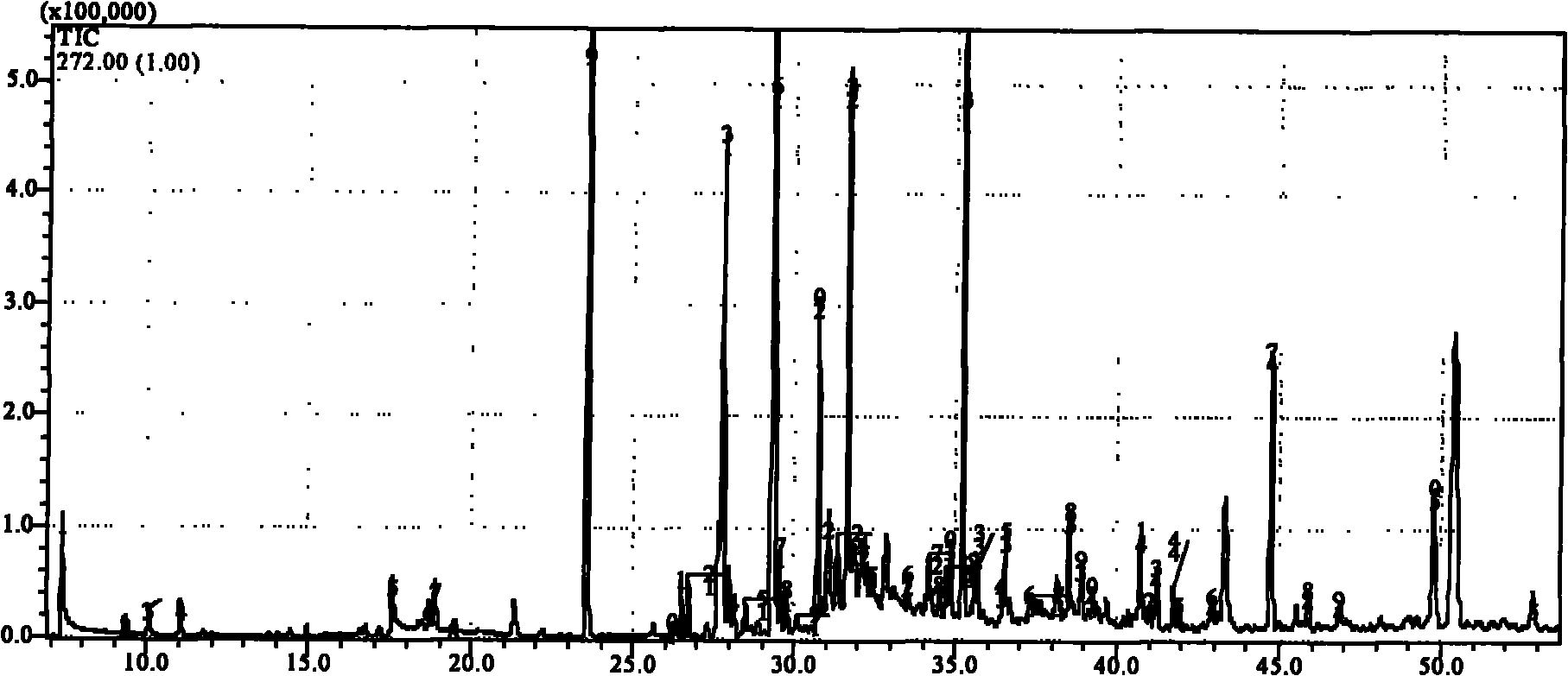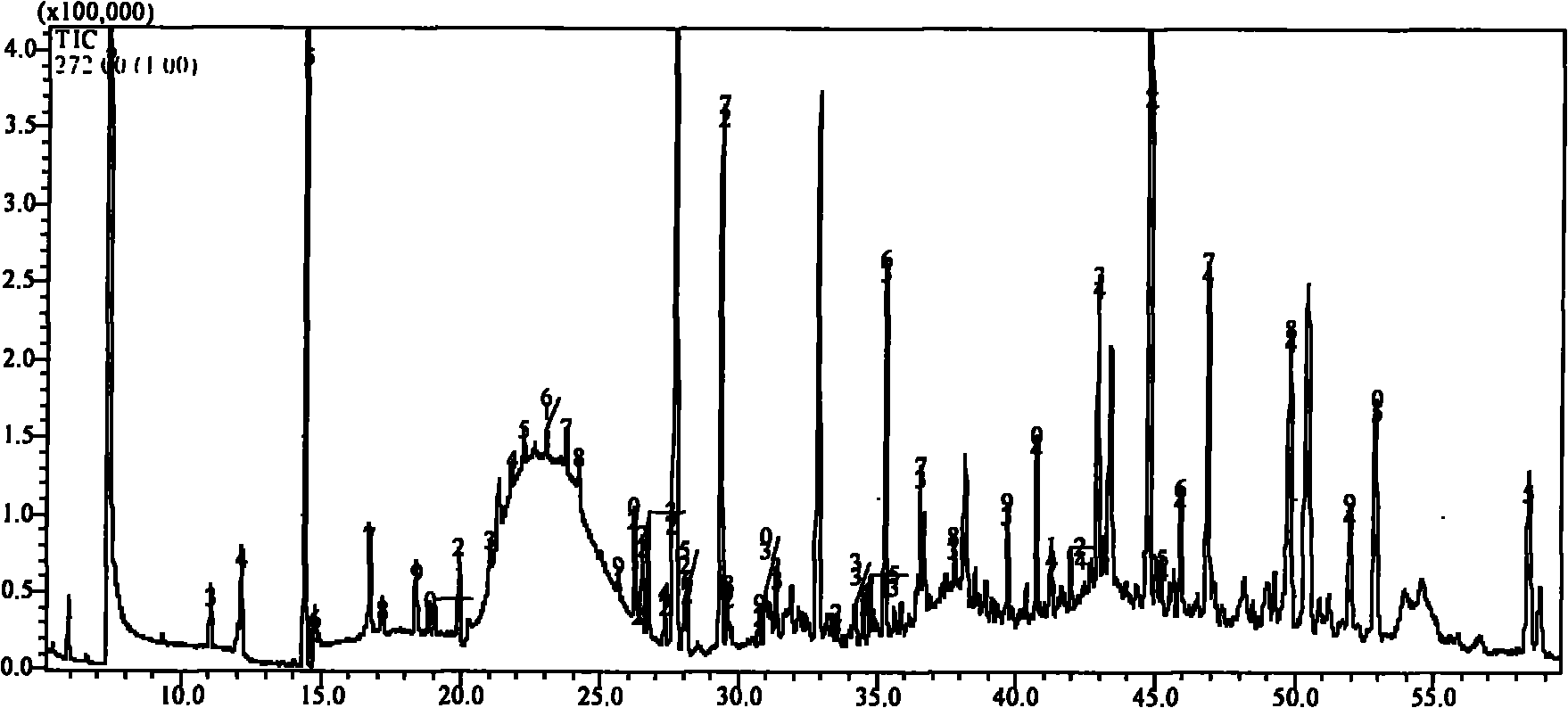Biologic fishy smell removing method for marine fish flesh
A technology for deodorization of seawater fish meat, which is applied in the field of deodorization of seawater fish meat, can solve problems such as inappropriate and unsuitable, and achieve excellent deodorization effect, good effect, and good deodorization effect
- Summary
- Abstract
- Description
- Claims
- Application Information
AI Technical Summary
Problems solved by technology
Method used
Image
Examples
Embodiment 1
[0019] Determination of the effect of yeast addition on the deodorization effect of American redfish meat.
[0020] Hit the head of the live American redfish with a hammer until it is dizzy, remove the scales, skin, viscera, gills, and clean the blood and impurities. Mash the fish to make a slurry and divide evenly into six portions, labeled A to F. In 5 parts of slurries that are numbered B, C, D, E, F, the yeast of 0.5wt%, 1.0wt%, 2.0wt%, 3.0wt%, 4.0wt% is added respectively by the amount of the slurry according to the amount of fish, Fermented at 35°C for 2.0h, and the deodorization effect was evaluated by Kramer sort test.
[0021] The ranking test is a method of comparing several samples and ranking a series of samples according to the degree of strength or preference according to the specified characteristics. This method can only sort out the order of samples, but cannot quantitatively evaluate the size of the difference between samples. Before the inspection, put fo...
Embodiment 2
[0033] Determination of the effect of yeast fermentation time on the deodorization effect of American redfish meat.
[0034] Add 2.0wt% yeast to 5 portions of American redfish slurry, ferment and culture them at 35°C for 0.5h, 1.0h, 2.0h, 3.0h, 4.0h, and use the sorting test——Kramer test to evaluate the deodorization The rank sum results of samples with different fermentation time are shown in Table 4.
[0035] Table 4
[0036]
[0037] Note: in Table 4 * Indicates that there is a peculiar smell, ** Indicates a strong odor
[0038] From Table 1 in combination with Table 4, it can be seen that at the significant level of a=0.05, the deodorization effect begins to occur after fermentation for 0.5 h. With the prolongation of fermentation time, the deodorizing effect of yeast was gradually enhanced. The deodorization effect of the fermentation time within the test range can be divided into three groups, the effect is from good to bad: F, E; D, C, B; A. Among them, F and E...
Embodiment 3
[0041] This embodiment thus reduces the influence of temperature on the deodorizing effect.
[0042]Add 2.0wt% yeast to 5 portions of American redfish slurry, ferment and culture at 25°C, 30°C, 35°C, 40°C, and 45°C for 2.0h, and use the sorting test method——Kramer test to evaluate the detoxification The rank sum results of different fermentation temperature samples are shown in Table 5.
[0043] table 5
[0044]
[0045] Note: in Table 5 * Indicates that there is a peculiar smell
[0046] Table 1 combined with Table 5 shows that at the significant level of a=0.05, the fish slurry deodorization effect of the fermentation temperature within the test range can be divided into three groups, and the deodorization effects are E, D, respectively, from good to poor; C, B; A. When the fermentation temperature is 35-40°C, the yeast has strong activity and the deodorization effect is the best, but if the temperature is too high, the deodorization effect of the yeast will be weaken...
PUM
 Login to View More
Login to View More Abstract
Description
Claims
Application Information
 Login to View More
Login to View More - R&D
- Intellectual Property
- Life Sciences
- Materials
- Tech Scout
- Unparalleled Data Quality
- Higher Quality Content
- 60% Fewer Hallucinations
Browse by: Latest US Patents, China's latest patents, Technical Efficacy Thesaurus, Application Domain, Technology Topic, Popular Technical Reports.
© 2025 PatSnap. All rights reserved.Legal|Privacy policy|Modern Slavery Act Transparency Statement|Sitemap|About US| Contact US: help@patsnap.com



